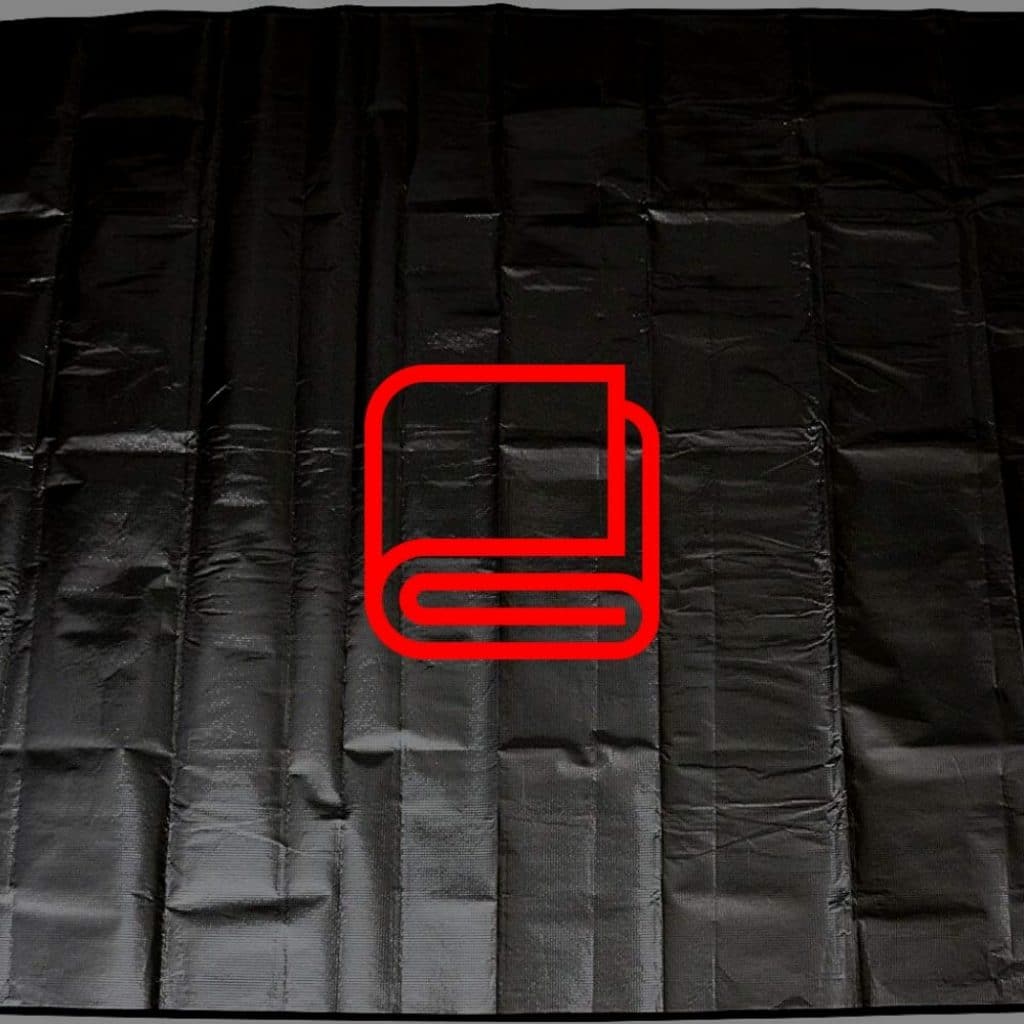How do emergency blankets actually work when SHTF happens?
Have you been thinking about going on a wilderness hike?
Have you thought about what would happen if you had to spend the night? Do you travel long distances with the fear of breaking down in an area without cell service?
Are you preparing to survive outdoors in the event of an epidemic or apocalypse?
If you said yes to any of these questions, you may be thinking about buying, or simply want to know about how emergency blankets work(a.k.a: safety blanket, survival blanket).
This is an excellent decision, as buying something as inexpensive as an emergency blanket could be what helps you survival an otherwise perilous night in the harsh elements of nature.
Now you may be wondering, how does this small and inexpensive plastic bag protect me from the elements?
Well in the next few paragraph’s I hope to answer all of your questions about how survival blankets work.
Emergency Blankets
Designed for NASA, Outdoors, Hiking, Survival, Marathons or First Aid
Note: It is important to mention that for this article we will solely be going over the instructions for the use of an emergency blanket only, and not the survival bag or emergency bivvy, which it is often mistaken for.
The survival bags are made from the same material, but as they are “bags” they have their own specific use and limitations, while not being as versatile.
Also not to be confused with a bug out bag, which is an all around survival kit that may include many things such as an emergency blanket and/or an emergency bivvy.
https://www.youtube.com/watch?v=eJPKzyaBnns
Table of Contents
Emergency blanket material
Emergency blankets are made up of 2 layer:
- A Heatsheet
- A polypropylene film with vapor deposited aluminum, making it completely waterproof.
The aluminum reflective side is a bright silver color, while the outer layer is a bright orange;
the reason for this is so you are made clearly visible if you are in an emergency scenario in need of being rescued.
One nice thing about the emergency blanket is how compact it is. It can easily fit into a bug out bag, a glove compartment, console, or even a first aid kit.
Take special care if you are trying to refold the emergency blanket that you find a place with little to no wind.
Some people have had a frustrating experience refolding and storing it, saying that it is not even worth the hassle to reuse one, however, if it’s refolded with care, it is possible to return it to its original packaging.
Note: This job is much easier with two people. Instructions on refolding the emergency blanket may vary due to differences across brands and types.
Using the emergency blankets water resistant qualities
Water protection
One way to utilize the emergency blanket is for water protection in a rainstorm. To do this;
- Lay out the emergency blanket to find the center of it
- Cut a slit through it large enough for your head to fit through
- Wear blanket like a poncho, using the reflective side on the inside to conserve body heat.
Water Gathering
In a rainstorm, you can also use the blanket for water gathering. Simply:
- Tie 2 ends of the blanket about 2-3 feet above the ground
- Tie the 2 opposite ends 1 foot above the ground
- Place bucket or bottle under the lower end to catch rain
- Apply pressure towards centre of the blanket to create a valley to focus the water into
Using the emergency blanket to prevent heat loss
People can lose body heat in 3 different ways: radiation, convection, and conduction.
Now, unfortunately, the emergency blanket does very little for the loss of heat through conduction, so it is a good idea to inform yourself on alternative measures to prevent this type of heat loss from happening.
Nonetheless, the emergency blanket does a great deal to control the other two sources of heat loss, which are mentioned below.
Radiation
Heat dissipating from our skin, can be reflected back onto your skin as well.
The impermeable metal sheet traps up to 90% of body heat that would otherwise be lost to the surrounding environment! There are many ways you can utilize this, including:
- Using the emergency blanket simply as a blanket
- Using it as a shoe/boot liner to help maintain body heat through radiation
- Wrapping it around different limbs to specifically target those areas or simply using it as a face shield will help you retain as much body heat as possible in critical situations.
Convection
Loss of heat through air movement can be prevented using the blanket to:
- Build a shelter, which is optimal for blocking wind from either side, or
- Build a lean-to, which is a somewhat simpler way to build, although it only shelters you from the wind on one side.
Building either one of these types of shelter involves using your natural surroundings in addition to the emergency blanket.
If you have a rope as part of your survival pack, you’ll find that it makes the amount of ways you can build these shelters increases dramatically, while also making it easier.
As I’ve stated before, the emergency blanket should be a PART of your survival kit, not the extent of your survival kit.
Using the emergency blanket to start fires
The two ways that you can use the blanket to start fires include:
- If it is sunny out, use it’s reflective qualities to ignite a fire by putting the reflective side face up, and putting something flammable like dry leaves or old man’s beard on top of it
- In the absence of sun, focus a false light on it to create a similar effect to a magnifying glass and concentrate the reflected light in one spot.
- If you have a lighter or ignition source, crumble up the safety blanket and put it underneath the tinder and light it.
Now that you are confident in the ability of the emergency blanket, and the emergency blankets ability to keep you warm, I encourage you to keep one with you for whatever life throws your way! The beauty of their design makes them easy to bring along in any situation.





